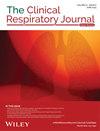Comparative Evaluation of Pleural Fluid Cholesterol and Total Protein Versus Light's Criteria in Differentiation of Exudates and Transudates: A Cross-Sectional Analysis at Tribhuvan University Teaching Hospital
Abstract
Introduction
Pleural effusions are very common clinical findings in clinical practice. Their proper diagnosis based on different parameters like pleural fluid protein, LDH, ADA, and cholesterol is very important. Light's criteria, though used as a standard method in differentiating pleural effusions as exudates and transudates, usually misidentifies 15%–20% of transudates as exudates. Hence, the role of other criteria like combined pleural fluid cholesterol and total protein in the differentiation of pleural fluid is studied in this study. The objectives of our study are to determine the role of combined pleural fluid cholesterol and total protein in the differentiation of exudates and transudates in cases presenting in Tribhuvan University Teaching Hospital.
Methods
This is a single-centered, analytical, cross-sectional, observational study. This is carried out among patients who are diagnosed as a case of pleural effusions from the emergency ward and respiratory ward of Tribhuvan University Teaching Hospital. Data collection was started after ethical approval was taken from IRB. The data were analyzed through SPSS version 22 for data analysis.
Results
Total of 90 patients with pleural effusion were enrolled in this study. Out of 90 patients, 49 patients were male, and 41 patients were female. The mean age of patients was 52.86 (±17.90) years. Tuberculosis was the most common disease associated with effusions, followed by pneumonia and malignancy. Based on Light's criteria, 65 (72.2%), pleural effusions were found to be exudates, and 25 were found to be transudates, with sensitivity and specificity of 98.4% and 85.7%, respectively. According to pleural fluid total protein, it classified 62.2% [n = 56] of cases as exudates and 37.8% [n = 34] of cases as transudates. Sensitivity and specificity were 88.7% and 96.4%, respectively. Based on pleural fluid cholesterol, 64.4% [n = 58] of cases were shown as exudates and 35.6% [n = 32] of cases as transudates, with sensitivity and specificity of 93.5% and 100%, respectively. Combined pleural total protein and cholesterol, however, classified 57.8% [n = 52] of cases as exudates and 42.2% [n = 38] of cases as transudates, with sensitivity and specificity of 83.9% and 100%, respectively.
Conclusion
Though Light's criteria remain the gold standard for distinguishing transudates from exudates, combined pleural fluid cholesterol and total protein examination improve diagnostic accuracy in circumstances where the diagnosis on discharge differs from the outcome from Light's criteria.


 求助内容:
求助内容: 应助结果提醒方式:
应助结果提醒方式:


